From farm to fork, foodborne illness can materialize at any point during a tomato’s journey into the belly of a customer. This article will help you minimize the risk of microbial hazards associated with fresh produce. Fortunately, by using the best practices we’ll be discussing here, you can keep foodborne illness at bay.
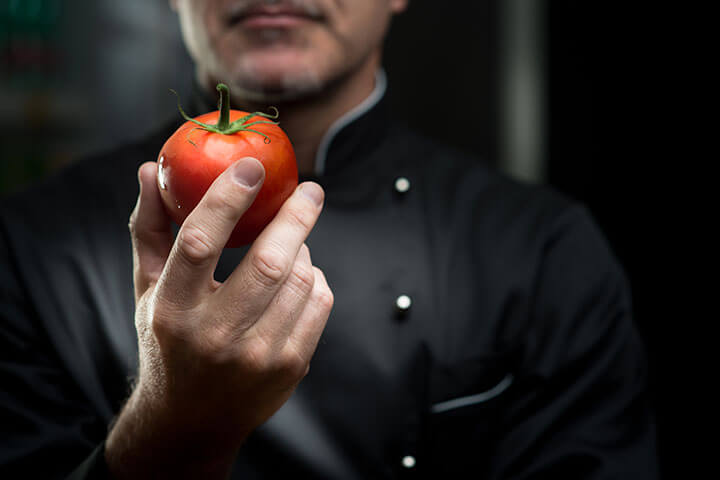
How Sneaky Salmonella Creeps Into the BOH
While fruits and vegetables offer undeniable health benefits, it is a myth that they are always safe to eat. In fact, one surprising vegetable/fruit/berry that is chronically responsible for achy bowels is the seemingly innocent tomato.
People tend to associate the bacterial infection, salmonella, with meat and dairy products. This paints an incomplete picture as tomatoes are also a culprit with points of infection often traced back to restaurants.
Contamination can occur from bacteria in water, soil, and from animal sources. Another common source of contamination occurs during cutting when the bacteria from an unproperly washed tomato transfers to the internal flesh. And of course, contamination from people can happen at any time from farm up until consumption.
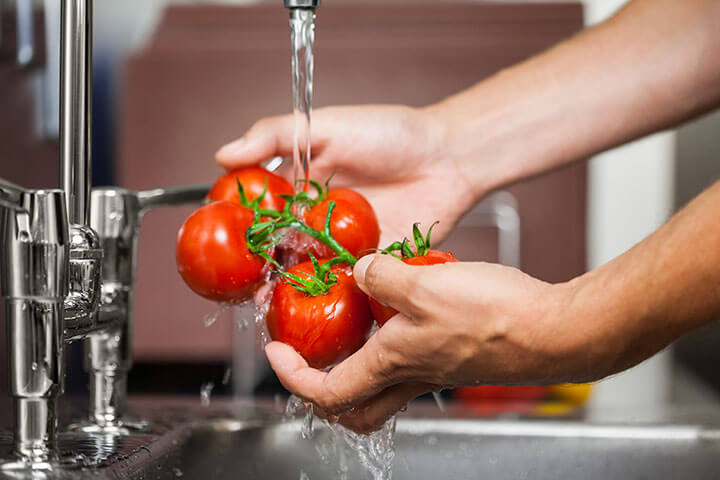
To avoid salmonella and other bacterial infections, follow our tried-and-true best practices backed by the Environmental Health Specialists Network (EHS-Net), a collaboration of environmental health specialists that research restaurant food safety policies and practices.
Washing, Temperature Control, & Sanitation Tips for Tomatoes
Tomatoes are delicate and require more attention than they often receive in the back-of-house. On the whole, studies pinpoint improper holding temperatures as the greatest threat to safety. Likewise, the method used for washing them in the foodservice industry is very specific and this routine isn’t always followed. In light of these findings, here are the best ways to safely handle tomatoes in commercial kitchens.
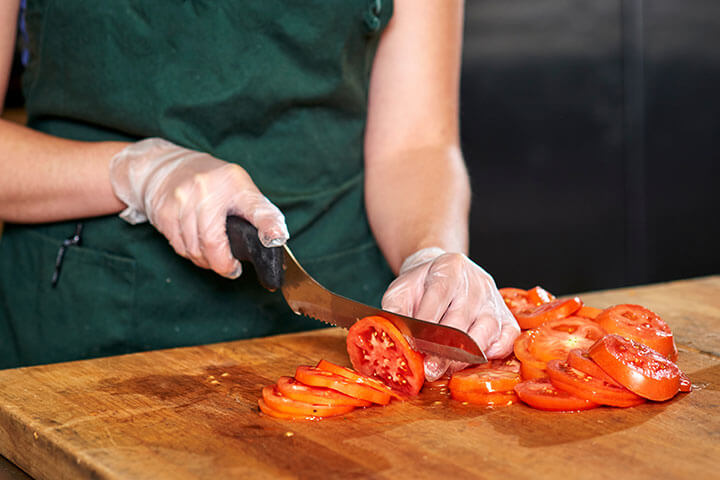
Recommendations for Handling Tomatoes in Commercial Kitchens
- Wash whole tomatoes under running water. Do not allow tomatoes to soak in standing water as any contamination may be absorbed through the tomato’s skin.
- When washing tomatoes, keep the water temperature at least 10 degrees warmer than the tomato itself.
- Separate tomatoes from meat and other produce during preparation. Tomatoes require their own cutting board to avoid cross contamination.
- Ready-to-eat foods —- raw produce, for instance — require single-use gloves to be worn during prep.
- Tomatoes are happiest at 41 degrees or less and shouldn’t be held at higher temperatures after cutting.
- Holding cut tomatoes at temperatures higher than 41 degrees could lead to bacterial growth and faster decay. If refrigeration isn’t possible, hold unrefrigerated cut tomato pieces for 4 hours or less.
- If possible, make sure tomatoes are refrigerated during all stages of production and transportation.
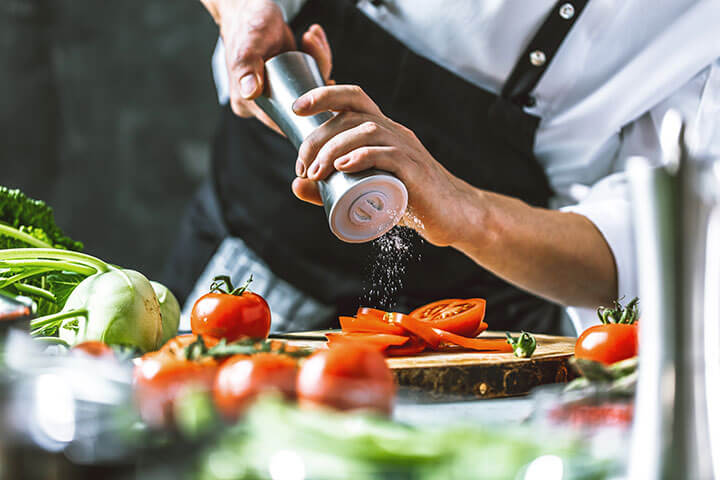
Tomato Time
Tomatoes are a beloved part of our commercial kitchens. Following best practices for washing, temperature control, and general sanitation helps keep bacteria off our nutrient-dense superfood and create delicious and safe cuisine while adding a splash of color to salads, entrees and appetizers.

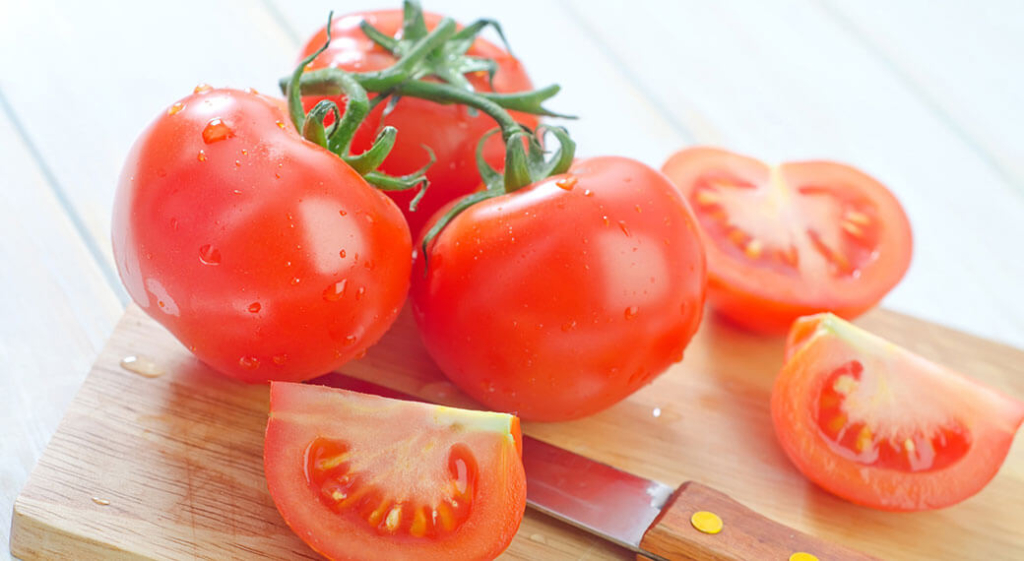


Preventing Spoilage in Stored Tomatoes: Best Practices